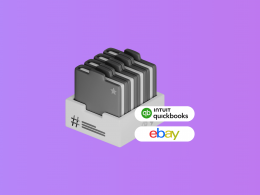As a financial consultant or business owner, it is critical to understand prepaid expenses and how to account for them. A prepaid expense is a payment made in advance for goods or services that will be received in the future. These payments are recorded as assets on the balance sheet until they are used or consumed, at which point they become expenses on the income statement. So, it involves recording the financial transactions that show the debit and credit accounts affected.
In this article, we’ll explore different types of prepaid expenses, how to account for them, and common mistakes to avoid to ensure accurate financial reporting.
Why prepaid, or what are prepaid expenses?
Let’s dive a bit deeper into the definition of expenses that can be prepaid and their impact on business finances.
Prepaid expenses refer to expenses that a business pays in advance before they are actually incurred. In accounting, you might want to record a prepaid expense as a prepaid asset on the balance sheet until it’s used or consumed.
Various types of spending can be considered a prepaid expense, including prepaid rent, insurance premiums, and prepaid advertising. When a business pays for these expenses in advance, they are recorded as assets on the balance sheet.
Once the prepaid expense is used or consumed, it is recognized as an expense on the income statement. This is known as amortization or allocation of the prepaid expense over the period that it is expected to benefit the business.
Prepaid expenses are important in accounting because they represent a prepaid asset that will be used in future periods. They also impact the accuracy of financial reporting, as they can affect the balance sheet and income statement.
A quick note:
A prepaid expense should not be confused with an accrued expense. Accrued expenses involve using assets and then paying for them later, while prepaid expenses require paying for assets in advance before using them. The amount paid for accrued expenses is settled after the assets have been utilized, whereas for prepaid expenses, it precedes the utilization of assets.
Types of Prepaid Expenses
Prepaid expenses come in different forms, and it is crucial to identify them to record them accurately. The two types of prepaid expenses are deferred expenses and prepaid income. Deferred expenses are payments made for goods or services that will be received in the future. Prepaid income is when a company receives payment in advance for goods or services that they will provide in the future.
Let’s look at the prepaid expense examples in a bit more detail.
Prepaid Rent
Prepaid rent is a concept widely used in the accounting practices of businesses, particularly in the context of lease agreements. It involves businesses paying rent in advance for a predetermined period, such as several months or a year, prior to the lease’s commencement date. This prepayment acts as a form of security deposit, giving landlords assurance that businesses will fulfill their obligations under the lease agreement, including making timely rental payments.
In business accounting, prepaid rent is recorded as an asset on the balance sheet until it is consumed, at which point it is recognized as an expense.
This practice is a common feature in many businesses, including those that lease commercial spaces or rent equipment for long periods.
Prepaid Insurance
Prepaid insurance is a key component of business accounting, whereby advance payments are made for insurance coverage. This involves a business paying for insurance coverage upfront for a specified duration, typically ranging from a few months to a year.
The payment is usually recorded as a prepaid expense on the balance sheet, representing insurance coverage that has been paid for but not yet utilized. This approach ensures that businesses are financially protected against unexpected events such as theft, fire, or other insured risks. As the coverage period expires, the prepaid insurance account is reduced, and the consumed portion is recorded as an insurance expense in the income statement.
By accounting for prepaid insurance, businesses can manage their finances effectively, plan for future expenses, and maintain the necessary level of insurance coverage.
Prepaid advertising
Prepaid advertising refers to a type of prepaid expense where a business pays for advertising services in advance before they are rendered. This typically involves paying for advertising space or airtime for a specified period, such as a few weeks or months, before the advertising campaign begins.
The prepaid advertising expense is recorded as an asset on the balance sheet until the advertising campaign starts, at which point it is recognized as an expense in the income statement.
Prepaid advertising provides several benefits to businesses, including the ability to secure preferred advertising positions and rates, manage cash flow, and plan for future marketing expenses. It is a common practice in many industries, including retail, entertainment, and hospitality, where businesses frequently engage in promotional activities to attract customers.
Accounting for Prepaid Expenses
Accounting for prepaid expenses involves recognizing and recording advance payments made by a company for goods or services that have not yet been received or utilized. The primary objective of accounting for prepaid expenses is to accurately reflect the financial position of the business and ensure that expenses are recognized in the appropriate accounting period.
When you make a payment for a prepaid expense, you initially debit your prepaid expense account and a credit to the cash account (or accounts payable, if payment is made on credit). This entry recognizes the business’s payment for goods or services that have not yet been consumed.
As the goods or services are utilized over time, the prepaid expense asset account is gradually reduced, and the corresponding expense account is increased. For example, when a business pre-pays for rent, it initially records the payment as a prepaid rent asset. As each month passes and the business utilizes the rented property, it recognizes the portion of prepaid rent that has been consumed as an expense in the income statement.
The accounting treatment for prepaid expenses enables businesses to effectively manage their cash flows, budget for future expenses, and ensure that expenses are recognized in the appropriate period.
Journal entry for prepaid spending
Recording a prepaid expense requires a prepaid expense journal entry that accurately records the transactions in the accounting books. Thus, the entry for prepaid rent is a debit to the prepaid expense account and a credit to the cash account. When amortizing prepaid expenses, companies must debit the expense account and credit the prepaid expense account. Journal entries must be recorded accurately to ensure that the accounting books are correct.
💡 Take the hassle out of due diligence with our expert insights and guidance. Let us simplify this critical process for you!
Mistakes to avoid when you record prepaid expenses journal entries
Accounting for prepaid expenses can be challenging, and companies may make common mistakes that can impact their financial reporting. The following are some common mistakes to avoid when recording prepaid expenses:
Not recording a journal entry for prepaid expenses accurately
Companies must accurately handle prepaid expenses by debiting the appropriate prepaid account and crediting the cash account. Failing to record prepaid expenses accurately can result in inaccurate financial reports and misrepresentations of the company’s financial position.
Not amortizing prepaid expenses correctly
When amortizing prepaid expenses, companies must recognize the remaining amount as an expense on the income statement. Failing to recognize the remaining amount as an expense can result in overstating the company’s net income.
Failing to update prepaid expense accounts: Companies must update their prepaid expense accounts to reflect the amortized amount accurately. Failing to update the prepaid expense account can hamper the accuracy of reporting.
Not tracking the expiration date of prepaid expenses
Companies must track the expiration date of prepaid expenses to ensure that they are recognized as expenses when they expire. Failing to track the expiration date can result in overstating the company’s assets and understating its expenses.
Not adjusting prepaid expenses at the end of the accounting period
Companies must adjust their prepaid expenses at the end of the accounting period to ensure that they are accurately recorded. Failing to adjust prepaid expenses can result in inaccurate financial statements.
How to ensure accurate financial reporting?
Accurately accounting for business transactions, including prepaid expenses, is essential for ensuring accurate financial statements. At this point, recording a summarized scope of them as a single journal entry can sometimes be better than per transaction entries.
First, summaries simplify the accounting process. Instead of recording every transaction individually, businesses can summarize multiple transactions into a single journal entry. This reduces the number of entries required, saving time and reducing the risk of errors.
Second, such entries make it easier to analyze financial data. By summarizing transactions into a single entry, businesses can quickly see the total amount of expenses or revenue for a particular account. This makes it easier to identify trends and patterns in financial data and make informed decisions based on that information.
Third, summarized entries might improve tax recording for businesses with high volumes of daily transactions (like Amazon sellers or other e-commerce businesses). Accounting software with the summary journal entry option can facilitate recording of the whole scope of transactions made during the day with detailed information on taxes collected and withheld.
Finally, they reduce the chance of errors. When recording transactions individually, there is a higher risk of data entry errors, especially when there is a high volume of transactions. By summarizing transactions, businesses can reduce the chance of data entry errors, ensuring the accuracy of their financial records.
If you believe that using summary entries can help you more accurately account for your business transactions, you might want to give Synder a try in a Daily Summary sync mode. You can sign up for a free trial. Or if you prefer a specialist to talk you through the process via a live chat, book office hours with the Synder support team.
Handling prepaid expense entries: key takeaways
Effective planning for financial reporting requires proper accounting of prepaid expenses. A CPA or financial analyst must have a comprehensive understanding of different types of prepaid expenses, such as rent, insurance, and others, and accurately record them through journal entries. But a company owner should also be familiar with them. This process is essential for businesses to avoid common mistakes and maintain reliable financial statements. Keeping a close eye on expenses prepaid is a critical aspect of financial management for any company. Here are some key takeaways:
What are prepaid expenses?
Prepaid expenses are expenses that have been paid in advance for goods or services that will be received or consumed in the future.
Why is it important to properly account for prepaid expenses?
It is essential to properly account for prepaid expenses to ensure accurate financial reporting. Prepaid expenses can have a significant impact on a company’s financial statements, and incorrect accounting can lead to misleading financial information.
How are prepaid expenses recorded in journal entries?
Prepaid expenses are recorded as assets in journal entries. When the prepaid expense is initially paid, it is recorded as a debit to the prepaid expense account and a credit to cash. As the prepaid expense is used, it is gradually recognized as an expense by debiting the appropriate expense account and crediting the prepaid expense account.
What are some common mistakes to avoid when recording prepaid expenses?
One common mistake is failing to adjust the prepaid expense account as the expense is used. Another mistake is recording prepaid expenses as expenses when they should be recorded as assets. It’s also important to ensure that the expense is recognized in the correct period, as recording it in the wrong period can skew financial statements.
How can I stay on top of prepaid expense journal entries?
It’s important to establish a system for tracking and managing prepaid expenses, such as using accounting software or a spreadsheet. Regularly reviewing and reconciling accounts can also help catch any errors or discrepancies. Consulting with a CPA or financial analyst can also provide guidance and support in properly recording prepaid expenses.






